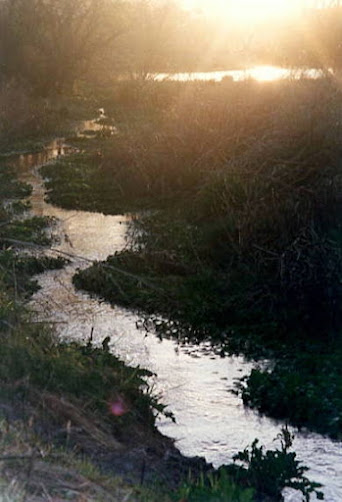One Never Knows
 |
| Rescue underway |
Two days before, a Mourning Dove had accidentally flown into that same window and died instantly, which had made me realize that the window was a hazard again because some of the bird-deterrent decals had fallen off of it over the winter. I had already bought more decals, and just needed to put them up. Now, with a heavy heart, knowing that I had forgotten this important task, I went to the front door and looked out.
A male Broad-billed Hummingbird was lying on the front porch
stoop, motionless. With hope that
it was just stunned but not dead, I went out and knelt down beside it to see
that its tiny dark eyes were open and blinking. Two things jumped into my head that I knew I had to do: get
it into a safe place out of the hot sun, and see if it would drink any nectar
to get some energy back. Hummingbirds
need to drink nectar every 15 minutes throughout the day to keep up with their
incredible metabolism, and I had no idea how long ago this one had done
so. I scooped it up in the palm of
my hand, and carefully walked over to the covered porch of my studio. It moved just enough to look around as
I sat down on the porch, but did not resist or try to move its wings. My husband Uno followed me with one of
our hummingbird feeders, opened the top, and set it on my lap. While holding the tiny treasure in one
hand, I dipped a finger from my other hand into the sugar water to get a small
drop on my fingertip, and then put it right next to the tip of its bright red
bill. It took a few tries, but
then its tiny tongue- no thicker than a hair- began to lick the first sugar
water drop, then another and another.
My head was bent down close, and I could see the tiny fork in the very
tip of its tongue too, which makes it easier and quicker for all hummingbirds
to “swirl up” the nectar from flowers.
My heart was beating like mad.
The elation of getting to witness and experience something I had only
seen on videos, mixed with the fear that my efforts to save this amazing
creature would be in vain.
After drinking up multiple drops, looking around more and fluffing its feathers a bit, the hummingbird became motionless again. The only sign of life was its blinking eyes and the fast beating of its heart, which caused its breast feathers to vibrate intensely. By then it had been 15-20 minutes since it hit the window, and my fear began to build again. Then with a quick flick of its wings, it took off but only for a second, just long enough to land on a nearby bamboo stake that was leaning up against the porch post. While it perched there awkwardly, my husband and I looked at each other in dismay: Had it injured a wing? Was it still stunned or in shock? What more should we try to do? But then our hoped-for miracle happened, and it took off, flying fast, straight, and true, making a beeline behind the house and then swooping high into the sky.
We then made a beeline too, straight for the bird-deterrent decals, to put them up so this won’t happen again! Joy and wonder filled our hearts for the rest of the day. Yet another reminder that when waking up in the morning, one never knows what will happen that day to change our lives, or what we can do to change another life. That remains true with every step we take throughout each day, even if those steps are just around our own house and yard during these difficult days.
Millions of birds die each year in the US after striking
windows in our homes and businesses, and it happens throughout cities, towns
and rural areas. Birds often
strike windows that reflect mostly blue sky and clouds, and therefore fool them
into not seeing the glass. Here
are some tips to prevent your windows from being a danger to birds:
- Even partially closing the blinds or curtains can help a lot. We use this method for all our bedroom and bathroom windows. But because we like to watch the birds in our front garden so much, we seldom have those blinds closed, and instead use the methods below:
 |
| Hanging "curtain screen" on fixed side of patio door |
- Screens really help birds see that the window is there, and also cushion the blow if they do get fooled and fly into them. To protect birds from our big patio door, we added a free-hanging “curtain screen” in front of the non-opening side (see photo). We are also lucky that our house came with screens on all windows except three.
- Bird-deterrent, static cling decals that reflect ultra violet light can be purchased to place on the outside of non-screened windows, and white-outlined decals can be placed on the inside of windows. They work best when spaced 12-15 inches apart, and there are many patterns available: leaves, birds, flowers, and more. We have decals across all three of our picture windows. There is even UV liquid that you can use to draw on your own bird-deterrent designs (see photos)!
Photo credits:
Hummingbird rescue photo by Conrad Uno
Hummingbird rescue movie by Conrad Uno
Decal and curtain screen photos by Emily Bishton



